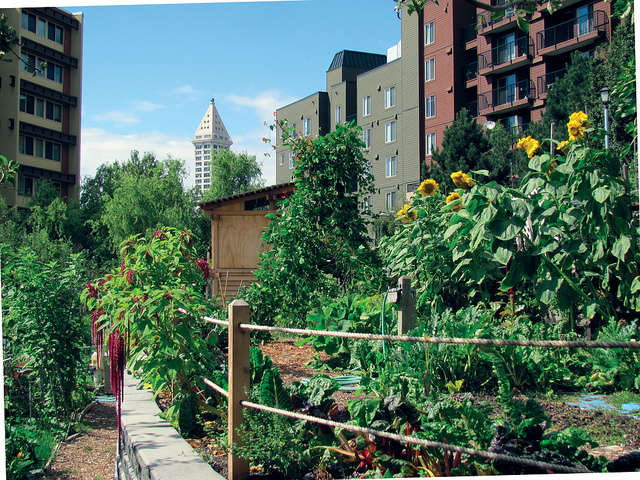City Blooming - Questions
City Blooming - Questions
Blog Article
Rumored Buzz on City Blooming
Table of ContentsThe Main Principles Of City Blooming City Blooming Things To Know Before You BuyExamine This Report about City BloomingCity Blooming Things To Know Before You Buy4 Simple Techniques For City Blooming
Intrigued in growing food available in the City of Chicago? Thinking of beginning an area garden? Changes to the Chicago Zoning Statute permit farming usages like neighborhood gardens and city ranches in numerous components of the city. Below is a listing of frequently asked questions pertaining to the policies and policies that farmers need to take into consideration when preparing an urban agriculture project.
The zoning amendment does not change any various other codes handling composting, structure permits, acquiring or leasing City possessed building, company licenses or ecological contamination. There are existing codes that regulate these issues and they stay completely effect and might apply to your task. Community gardens are commonly owned or handled by public entities, public companies or community-based organizations and preserved by volunteers.
Urban farms grow food that is intended to be sold, either on a nonprofit or for-profit basis. Due to their commercial purpose, metropolitan farms need a business permit.
Getting The City Blooming To Work
Composting is allowed however only for plant material that is created and made use of on website. The amount of compost material can not go beyond 25 cubic backyards at any type of provided time according to the requirements in 7-28-715 of the City's Municipal Code. Yes. Because the dirt at most brand-new yard websites needs modifying, compost, soil, timber chips, or other materials can be gotten to build or enhance the expanding area - sustainable gardening.

If a structure permit is called for after that the hoophouse will be considered an accessory structure. You can learn more concerning the building authorization needs by calling the Department of Structures. The 25,000-square-foot dimension restriction is meant to stop a single community yard from dominating a given block or diminishing the block's existing residential or business character.
The restriction does not apply to yards located in Public Open Area (POS) areas. Can there be more than one area garden that is 25,000 square feet on a solitary block? Yes. The size limitation applies to specific gardens, not to private blocks. No. Fencing is not called for, however, yards that have large auto parking areas might be required to set up fencing or other landscape design features.
The Facts About City Blooming Uncovered
B1 & B2 areas need that all business usage tasks be performed inside. R areas limit business activity. The regulations show the objective and intent of the Zoning Code. Is fencing required for metropolitan farms? Yes. Fences might be called for, in addition to landscape design and testing, for sure vehicle parking areas and outside work or storage areas depending on area and the details task taking location.
Yes. Urban ranches require building permits and zoning authorizations before building. Other types of city review may be required relying on certain structures, activities, size, landscape design, licensing, public heath and stormwater management issues. A number of these needs are recognized in the job style or allowing procedure, nonetheless, the applicant may be responsible to independently recognize certain licenses or permits that might be needed.
Yes. The kind of permit is determined by what is taking place at the site. The Department of Business Affairs and Customer Protection can aid identify the details sort of company certificate that's required. Yes. Off road vehicle parking is needed for many business projects in Chicago. The needed number of click for more parking rooms is based on the number of employees working on website and not the square video footage of the expanding space.
Not known Factual Statements About City Blooming

A metropolitan farm can sell garden compost product produced on site, nevertheless, the operation must abide with the regulations in 7-28-715 of the Chicago Municipal Code. Aquaponic systems are permitted inside on metropolitan farms in numerous zoning districts.
Up to 5 hives or swarms of honey may be maintained as an accessory usage. Beekeepers must sign up with the Illinois Division of Farming. For even more info regarding the proposed zoning modification you might call the Department of Housing and Economic Growth, Bureau of Preparation and Zoning at 312.744.8563.
Farming in cities and metropolitan areas A city ranch in Chicago. Urban agriculture describes different methods of growing. https://www.twitch.tv/cityblooming/about, handling, and dispersing food in metropolitan areas. The term also puts on the area tasks of pet husbandry, tank farming, beekeeping, and gardening in a metropolitan context. Urban agriculture is distinguished from peri-urban agriculture, which happens in backwoods at the edge of suburbs.
The Buzz on City Blooming
It can include a movement of natural growers, "foodies" and "locavores", that seek to create social media networks based on a common ethos of nature and area holism. These networks can establish by way of official institutional support, becoming integrated right into neighborhood town as a "shift community" activity for lasting urban advancement.
In either instance, the much more straight access to fresh vegetable, fruit, and meat products that may be become aware through metropolitan farming can boost food safety and food safety and security while reducing food miles, causing reduced greenhouse gas exhausts, thus adding to environment change mitigation. Some of the first evidence of urban agriculture comes from Mesopotamia.
Report this page